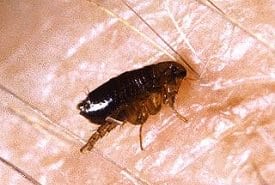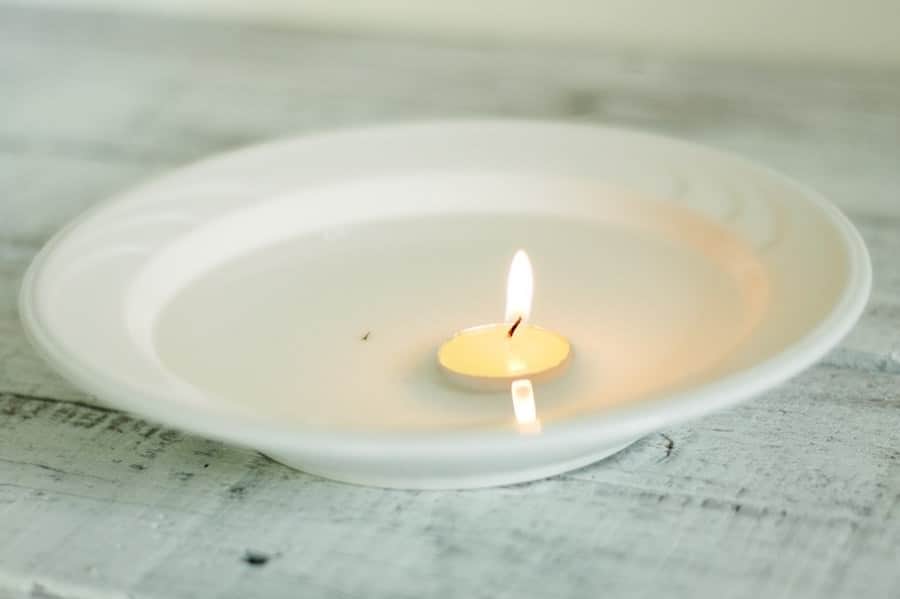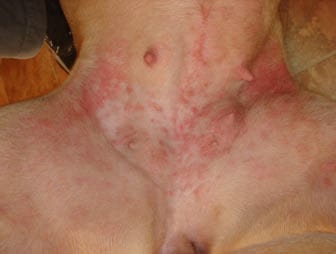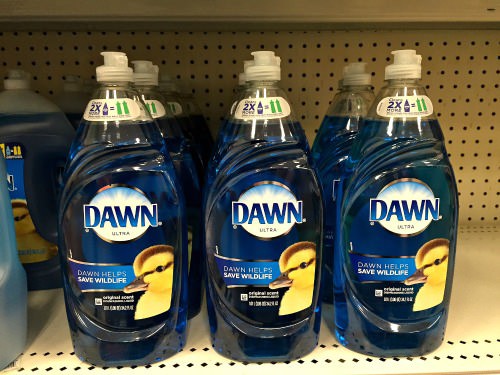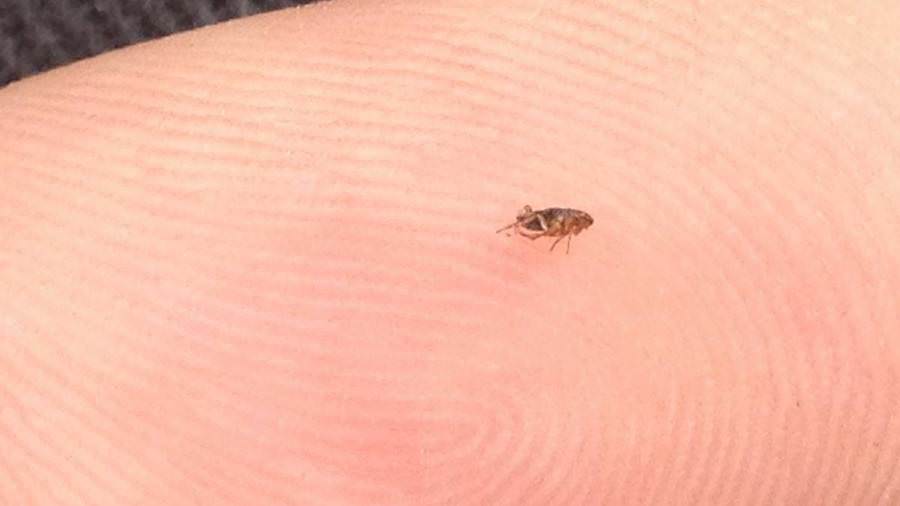How To Treat & Get Rid Of Fleas On Puppies
Every animal owner should know about fleas. If your pet begins scratching itself excessively you may have to check him. Getting rid of fleas on puppies is important as they are more than just causes of discomfort. Fleas can also bring on a lot of health issues in small animals.
If you have a young puppy, it’s vital that you try to steer clear of a flea infestation. Puppies are vulnerable, which means that the complications caused by fleas can become much more serious.
How to Get Rid of Fleas on Puppies
When getting a new puppy, fleas are probably the last thing on anyone’s mind. However, just because your dog is still a puppy, it doesn’t make it immune to a flea attack. But how should you treat it? The first important thing to keep in mind is the puppy’s age. Some flea treatments are not recommended for puppies under six weeks old. Don’t worry though, there are still many other effective ways to get rid of the annoying pests.
Puppies Under 6 Weeks
Most flea medications are not good for small puppies. If you notice signs of fleas on your new family member, it’s a good idea to groom the puppy with a special flea comb; this will pick out most of the fleas, if not all. You may have to do this several times. If this method is not effective, using tweezers to pick out the fleas individually may be the only option, although this will take time, especially if there are a lot. However, it is vital that you get all fleas off and away from the puppy.
When you have freed your puppy from the infestation, you will have to clean the puppy’s environment. Vacuum and wash the bedding where the puppy sleeps, and also the surrounding areas. If you have other dogs or animals living with the puppy, they will need to be treated as well.
You should also check the puppy’s gums. If they are pink it’s fine, but if they are white or pale, the puppy may have lost a lot of blood and show signs of anemia. If this is the case, it is vital the puppy is checked by a vet as soon as possible. You should also be on the lookout for tapeworm. This will look like small white spots in the puppy’s feces.
Puppies 6 Weeks & Older
When your puppy is six weeks you can start to use different treatments and preventions. There are many products available, such as:
- Sprays
- Dust
- Special collars
- Shampoos
- Spot-on products
- Chewable treats
There are two types of treatment: one that kills the fleas and another which kills the flea larvae. Some products do both. Killing the larvae is a good way to go if you are looking for long-term effects because then you are preventing the fleas from multiplying. But if you need something instant, killing the fleas directly is best.
Shampoo Treatment
Using a special shampoo to treat the puppy is an easy method to help get rid of the fleas. There are mild shampoo treatments available, made specifically for young animals, including puppies.
The shampoo will relieve some of the itching and discomfort the puppy may be experiencing. But this method is not very effective in getting rid of the fleas or the larvae, so the puppy is likely to need further treatment. Some shampoo treatments can be used on puppies as young as four weeks – check before using.
Spot-on Treatments
Spot-on treatments are a quick and easy way to treat fleas. The product comes in a container with a measured amount of oily liquid inside. You apply it in the back of the neck or the shoulder area on the puppy. It is important to comb away the puppy’s fur so the treatment is applied directly to the skin.
Make sure you squeeze out all the fluid so that the puppy receives the full treatment. The dose is determined by the weight of the puppy.
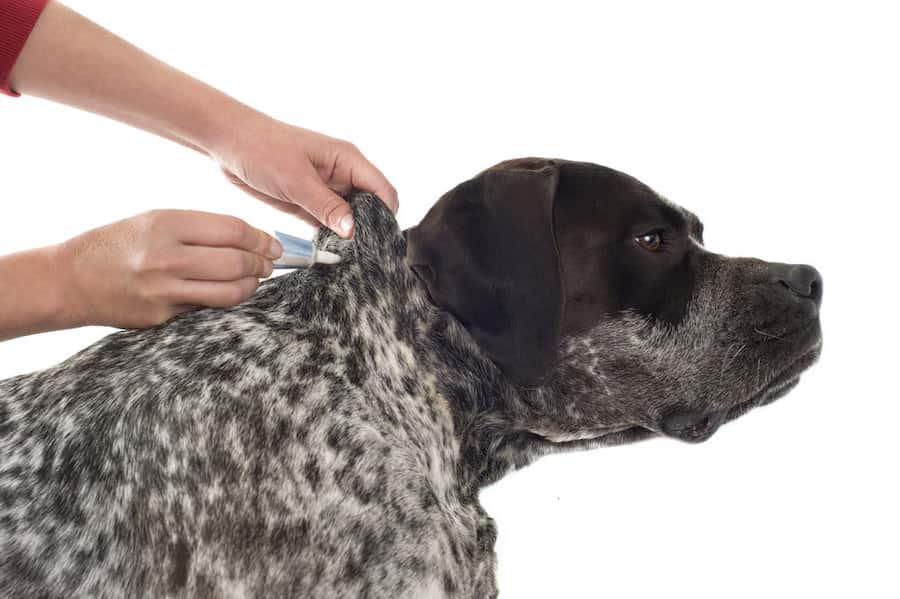
Spot-on treatments are a great option; not only do they get rid of the fleas, but they also prevent them from coming back. Stronger doses will even provide the puppy with protection for a whole month. Some of these treatments also protect the puppy from other harmful insects like ticks.
Spot-on treatments are usually recommended for puppies from seven weeks of age. It is essential to administer the correct dose for the puppy’s weight and age; overdose can be fatal.
Tablets
A flea pill is a great option in treating and preventing a flea infestation. The puppy will be given one pill orally, according to the vet’s instructions or the recommendation on the packet. The ingredients in the tablet will then kill the fleas on the puppy.
There are a few different pills with varying methods; some kill the adult fleas and/or the larvae, while others prevent the fleas from producing eggs. There are also tablets that provide protection and prevention for a long period of time, while others only work for as little as 24 hours.
If your puppy has an allergic reaction to the fleas, a fast-acting pill is the way to go. But if you’re looking to prevent fleas in the long run, then a longer-lasting tablet would be better.
There are flea pills available that are safe for puppies as young as four weeks. However, it is important to check with a veterinarian before administering any treatment.
Risks & Precautions
Fleas cause a lot of discomfort in animals. Excessive itching and scratching can take its toll on a little puppy. But it can also cause some severe reactions or diseases.
Due to a puppy’s small size, it’s even more vulnerable; if fleas are detected. it’s vital you get rid of them as quickly as possible. Fleas feed on blood; therefore, a sign of blood loss is something to look out for.
First Signs of a Flea Infestation
If your puppy has been in contact with another animal that has fleas, there is a great chance he puppy has been infected as well. But how will you know? Here are some signs you should look out for:
Flea feces on the puppy’s fur. This can look like little drops of dirt, hence why it’s commonly known as ‘flea dirt’.
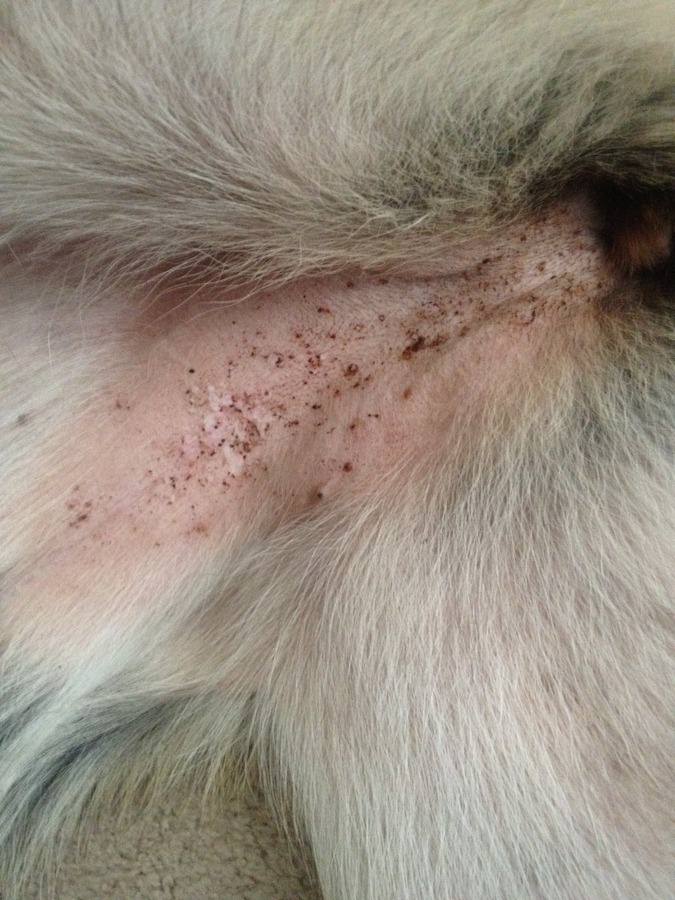
Flea eggs. These may be seen on the puppy’s fur, or even in the surrounding area, such as the bed where it sleeps.
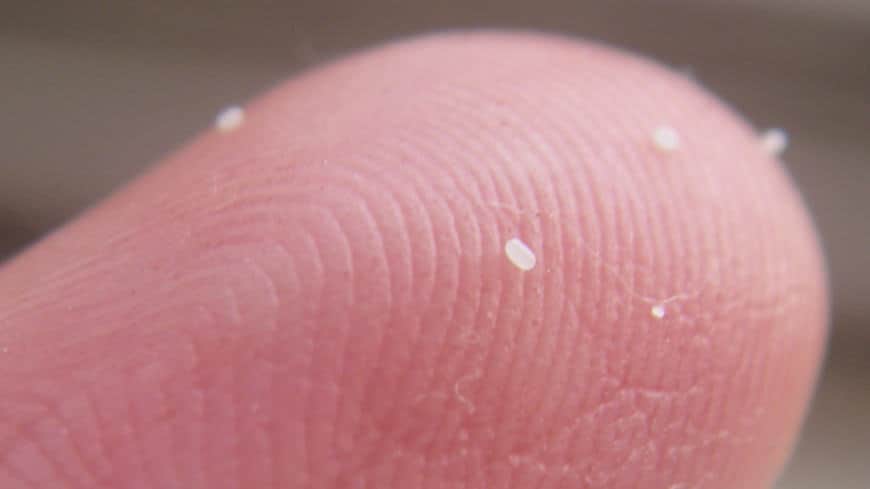
Excessive scratching or biting. It’s normal for puppies to scratch themselves, but if they begin scratching or even biting themselves excessively, it would be a good idea to check for fleas.
Hair loss and bald spots. The puppy might pull out a great amount of hair when trying to relieve the itching.
Light or pale gums: this could indicate a serious problem; if your puppy has pale gums you should take it to a veterinarian immediately.
Flea Allergy Dermatitis
Flea allergy dermatitis is when a dog is allergic to the flea’s saliva. This will cause the dog to scratch itself excessively, and maybe even start to bite itself, just to try and relieve some of the itching.
This can result in hair loss, bald spots, and scabs. The only way to treat this is to get rid of the fleas and prevent them from coming back.
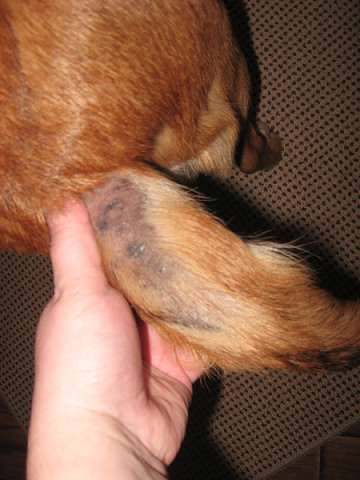
Tapeworms
If a puppy has become the host of a flea infestation and begun biting itself, this can result in the puppy accidentally ingesting a number of fleas.
Some fleas carry a tiny tapeworm larva. This worm can travel to the puppy’s gastrointestinal tract where it will grow. Once big enough, the tapeworm will then attach itself to the intestinal wall. Small parts of the tapeworm will break off here and there, these will then come out of the rectum.
Tapeworms aren’t dangerous to the puppy, but I recommend you seek treatment for it as soon as you notice it. You should also make sure to wash your hands well and don’t eat from anything the puppy has been in contact with, or you could become the next tapeworm host.
Anemia
Fleas feed on blood, and they can easily consume 15 times their size daily. If a puppy has become infested by many fleas, blood loss is likely to take place.
This is very dangerous for small puppies. If the fleas are not detected and the puppy keeps losing blood, severe anemia can occur. The puppy may then need a blood transfusion or hospitalization.
If your puppy seems lethargic, has a loss of appetite and is losing weight, it may be showing signs of anemia.
Transmitted Diseases
Fleas jump from host to host, biting different animals who could be carrying various diseases. Much like malaria can be transmitted via a mosquito, diseases like tapeworm, cat flu, and flea-borne spotted fever could be passed on to your puppy.
Some of the diseases can also be transmitted to humans, so it’s important to get rid of the fleas as fast as possible.
How To Prevent a Flea Infestation
Prevention is key to keeping your new puppy safe. Making sure the puppy’s surroundings are clean is important. If you have other animals in the house, make sure they are flea-free so they won’t spread the pests to the little new addition. You should also invest in a flea comb to occasionally brush the puppy and check for fleas.
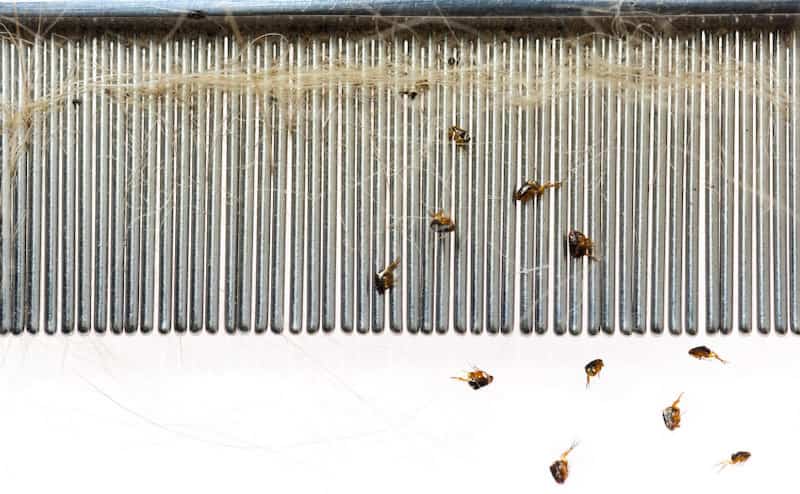
Washing the bedding where the puppy sleeps is essential. Washing it in hot water should get rid of most flea eggs, should there be any.
It’s important to check with a veterinarian before giving your puppy any flea medication. Giving the puppy flea preventatives might be unnecessary unless the puppy is in danger of picking up fleas from other animals. You should always talk to your vet and see what they recommend for your puppy.
Summary
A flea infestation can be difficult to deal with, particularly if you have a young puppy; but it is important to prevent any flea attacks. They can cause serious complications for a puppy, such as anemia and allergic reactions.
The treatment for the puppy will be determined by its age and weight. Always check with your veterinarian before starting any treatment.

